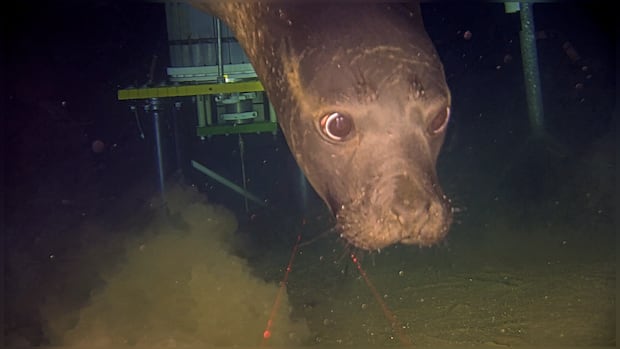Dec 28: Silly seals sabotage serious science and more...
Tuna success, rats driving cars, zooplankton fighting climate change, and chimps playing.


On this week's episode of Quirks & Quarks with Bob McDonald:

One day early in the pandemic, behavioural neuroscientist Kelly Lambert from the University of Richmond went to check on her rats. The rats responded with excitement when they saw her, anticipating the treats they were about to receive. That inspired her to pivot her research to study the effects that anticipating pleasurable experiences could have on the brain. She's found in research that has yet to be published, that building in anticipation periods before they get to do something they enjoy, increases, which, if her findings extend to humans, could help boost mental resiliency. Their previous work was published in Behavioural Brain Research.


A comprehensive study of province-sized marine protected areas in the tropical pacific has shown that they not only provide a refuge for fish, but improve tuna fisheries harvests in the areas outside their borders, making a win-win for conservation and industry. John Lynham, a professor of Economics at the University of Hawaii at Manoa, led the study which was published in the journal Science.


A study of chimpanzees in Zambia has revealed that play and grooming are infectious behaviours. Animals who observe others performing these activities are more likely to groom and play themselves, which the researchers think promotes social cohesion in the troop. Zanna Clay, a professor of Psychology at Durham University, was part of the team, which published in the journal PLOS One.


Researchers may have discovered a new, fairly simple way to stimulate life in the ocean to capture and lock up atmospheric carbon. Phytoplankton absorbs and then releases 150 billion tons of atmospheric carbon every year. The researchers found that by adding just a little bit of clay to a phytoplankton bloom, this glues carbon particles together, creating "carbon snow" that falls down and is eaten by zooplankton, who then deposit it in the deep ocean. Mukul Sharma, a professor of Earth Sciences at Dartmouth College, says that in the lab this method locked up 90 per cent of the carbon that phytoplankton released. His study was published in the journal Nature Scientific Reports.

A team of researchers developed a sophisticated deep-water experiment to observe and listen for sounds made by sablefish. They were startled when their study site was repeatedly visited by elephant seals, who would chase and chow down on the sablefish — all at 645 meters below the ocean's surface. This accidental observation was made in the Barkley Canyon Node, part of the Ocean Networks Canada (ONC) cabled video-observatory. It was the first time that elephant seals were studied in the deep ocean, giving unexpected and valuable new insights into seal resting and foraging behaviour. The findings were published in the journal PLOS One.
Producer Amanda Buckiewicz spoke with Rodney Rountree, an independent biologist, ichthyologist, and adjunct marine biologist in the Department of Biology at Victoria University.
And Héloïse Frouin-Mouy, an assistant scientist at the University of Miami's Cooperative Institute for Marine and Atmospheric Studies, and affiliate at the University of Victoria.
